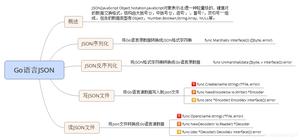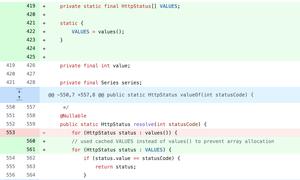Java原生序列化和反序列化代码实例
这篇文章主要介绍了Java原生反序列化" title="序列化和反序列化">序列化和反序列化代码实例,文中通过示例代码介绍的非常详细,对大家的学习或者工作具有一定的参考学习价值,需要的朋友可以参考下
写一个Java原生的序列化和反序列化的DEMO。
需序列化的类:
package com.nicchagil.nativeserialize;
import java.io.Serializable;
public class User implements Serializable {
private static final long serialVersionUID = 1L;
private Integer id;
private String userName;
public User(Integer id, String userName) {
super();
this.id = id;
this.userName = userName;
}
public Integer getId() {
return id;
}
public void setId(Integer id) {
this.id = id;
}
public String getUserName() {
return userName;
}
public void setUserName(String userName) {
this.userName = userName;
}
public static long getSerialversionuid() {
return serialVersionUID;
}
@Override
public int hashCode() {
final int prime = 31;
int result = 1;
result = prime * result + ((id == null) ? 0 : id.hashCode());
result = prime * result
+ ((userName == null) ? 0 : userName.hashCode());
return result;
}
@Override
public boolean equals(Object obj) {
if (this == obj)
return true;
if (obj == null)
return false;
if (getClass() != obj.getClass())
return false;
User other = (User) obj;
if (id == null) {
if (other.id != null)
return false;
} else if (!id.equals(other.id))
return false;
if (userName == null) {
if (other.userName != null)
return false;
} else if (!userName.equals(other.userName))
return false;
return true;
}
@Override
public String toString() {
return "User [id=" + id + ", userName=" + userName + "]";
}
}
工具类:
package com.nicchagil.nativeserialize;
import java.io.File;
import java.io.FileInputStream;
import java.io.FileNotFoundException;
import java.io.FileOutputStream;
import java.io.IOException;
import java.io.ObjectInputStream;
import java.io.ObjectOutputStream;
import java.io.Serializable;
public class NativeSerializeTools {
/**
* 序列化
* @param filePath 序列化的路径
* @param s 序列化的对象
*/
public static void write(String filePath, Serializable s) throws FileNotFoundException, IOException {
if (filePath == null || filePath.length() == 0) {
throw new RuntimeException("请传入序列化路径");
}
if (s == null) {
throw new RuntimeException("请传入序列化对象");
}
File f = new File(filePath);
ObjectOutputStream oos = null;
FileOutputStream fos = null;
try {
fos = new FileOutputStream(f);
oos = new ObjectOutputStream(fos);
oos.writeObject(s);
System.out.println("finish.");
} finally {
if (oos != null) {
oos.close();
}
if (fos != null) {
fos.close();
}
System.out.println("close the resource.");
}
}
/**
* 反序列化
* @param filePath 反序列化的路径
* @return 反序列化的对象
*/
public static Object read(String filePath) throws ClassNotFoundException, FileNotFoundException, IOException {
if (filePath == null || filePath.length() == 0) {
throw new RuntimeException("请传入反序列化路径");
}
File f = new File(filePath);
ObjectInputStream ois = null;
FileInputStream fis = null;
Object o = null;
try {
fis = new FileInputStream(f);
ois = new ObjectInputStream(fis);
o = ois.readObject();
System.out.println("finish.");
} finally {
if (ois != null) {
ois.close();
}
if (fis != null) {
fis.close();
}
System.out.println("close the resource.");
}
return o;
}
}
测试类:
package com.nicchagil.nativeserialize;
import java.io.FileNotFoundException;
import java.io.IOException;
import org.junit.Assert;
import org.junit.Test;
public class HowToUse {
private User user = new User(100, "Nick Huang");
private String filePath = "d:/user.txt";
@Test
public void c1() throws FileNotFoundException, IOException {
NativeSerializeTools.write(filePath, user);
}
@Test
public void c2() throws FileNotFoundException, IOException, ClassNotFoundException {
Object o = NativeSerializeTools.read(filePath);
System.out.println(o);
Assert.assertTrue(user.equals(o));
}
}
日志:
finish.
close the resource.
finish.
close the resource.
User [id=100, userName=Nick Huang]
以上是 Java原生序列化和反序列化代码实例 的全部内容, 来源链接: utcz.com/z/318109.html









